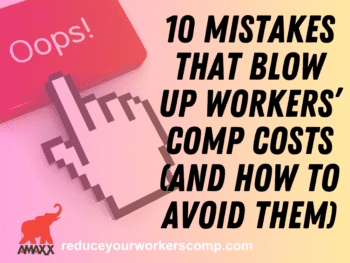Leakage in workers compensation is defined as the difference between what was paid on the claim and the amount the adjuster should have spent on the claim. Leakage is lost dollars through over payment of medical expenses, indemnity benefits, and claims handling cost — all ultimately resulting in higher workers compensation premiums for the employer.
Leakage can be divided into two types: hard and soft leakage. Hard leakage occurs when there is no doubt the payment should not have been made. Examples of this would include no coverage, a payment that is not owed, or an unquestionable overpayment. Soft leakage is more subjective, for instance; the payment of a questionable compensability claim or the high negotiated settlement.
Adjusters, supervisors, and claim managers are normally reluctant to admit they have made monetary mistakes. File reviews by the supervisor or manager will focus on the adjuster’s compliance with service standards set forth by the claims office. These internal file reviews are checking criteria and grading the process, they are not looking for financial mistakes – leakage.
An independent claims auditor on the other hand does not have to worry about the impression made on management when leakage is identified. The independent claims auditor can be totally objective in the review of the claim file. From the claims auditor’s perspective, the auditor is assisting the claims office to identify areas where they have made financial mistakes and will provide them guidance to avoid the same mistakes in the future. Plus, in some situations part or all of the leakage can be recovered.
When the claims auditor reviews the claim files, the auditor will pinpoint both hard leakage and soft leakage.
Click Link to Access Free PDF Download
18 financial areas reviewed by an independent auditor:
- The accuracy of the average weekly wage calculation.
- Accuracy of the weekly indemnity calculation.
- The payment of the correct number of lost work days, including the waiting period and the retroactive period.
- The continuation of indemnity benefits after the employee has returned to work.
- Failure to arrange modified duty when the medical provider permits the employee to return to work with restrictions.
- Payment of the same medical bills more than once.
- Payment of medical bills without the appropriate fee schedule reductions.
- The over- or under-utilization of medical case management.
- Identification of subrogation opportunities and the pursuit of subrogation.
- The proper application of offsets including social security, unemployment benefits, and other types of governmental compensation.
- Proper use of utilization reviews for pre-certification of treatment, concurrent treatment, and retrospective reviews.
- Management of defense counsel.
- Settlement of disputed cases at the optimum cost point.
- Payment of claims that are not compensable.
- The failure to recover reinsurance for claims that exceed the self-insurance retention.
- The failure to appropriately evaluate the disability rating.
- Failure to appropriately evaluate the value of future medical benefits when settling a claim.
- The failure to properly reserve the claim for medical, indemnity, and expense.
It should be noted that even the most experienced workers compensation claims auditor will not uncover ever occurrence of leakage.
Every leakage audit will identify “loss economic opportunities” (insurance talk for the failure to save money.) The leakage amount will vary from only two to three percent of the dollars spent in an excellently managed and operated claims office to a more disheartening 10 to 15 percent of the dollars spent in the poorly operated claims office. However, for a small claims office that pays out $50 million a year, a 2 percent leakage is $1 million. If the same claims office has a 10 percent leakage, that is a hefty $5 million lost. Leakage is often the difference between an insurer and self-insurer making or losing money on their claims program.
FREE DOWNLOAD: “Step-By-Step Process To Master Workers’ Comp In 90 Days”
Due to the many ways leakage can occur, a claims leakage audit has to be conducted by an auditor with a high level of expertise in workers compensation. The inexperienced auditor may recognize some of the mistakes and missed opportunities to favorably impact the claim’s overall cost, but it takes an experienced professional to identify most of the leakage in a claims office operation. If you would like to get an idea of the amount of leakage that is occurring in your claims operation, please contact us. We have experienced claims auditors that can help you identify the leakage in your claims operation.
Author Rebecca Shafer, JD, President of Amaxx Risks Solutions, Inc. is a national expert in the field of workers compensation. She is a writer, speaker, and website publisher. Her expertise is working with employers to reduce workers compensation costs, and her clients include airlines, healthcare, printing/publishing, pharmaceuticals, retail, hospitality, and manufacturing. See www.LowerWC.com for more information. Contact: RShafer@ReduceYourWorkersComp.com .
WORK COMP CALCULATOR: http://www.LowerWC.com/calculator.php
MODIFIED DUTY CALCULATOR: http://www.LowerWC.com/transitional-duty-cost-calculator.php
WC GROUP: http://www.linkedin.com/groups?homeNewMember=&gid=1922050/
SUBSCRIBE: Workers Comp Resource Center Newsletter
©2011 Amaxx Risk Solutions, Inc. All rights reserved under International Copyright Law. If you would like permission to reprint this material, contact Info@ReduceYourWorkersComp.com.
FREE DOWNLOAD: “Step-By-Step Process To Master Workers’ Comp In 90 Days”














Good summary. Thanks